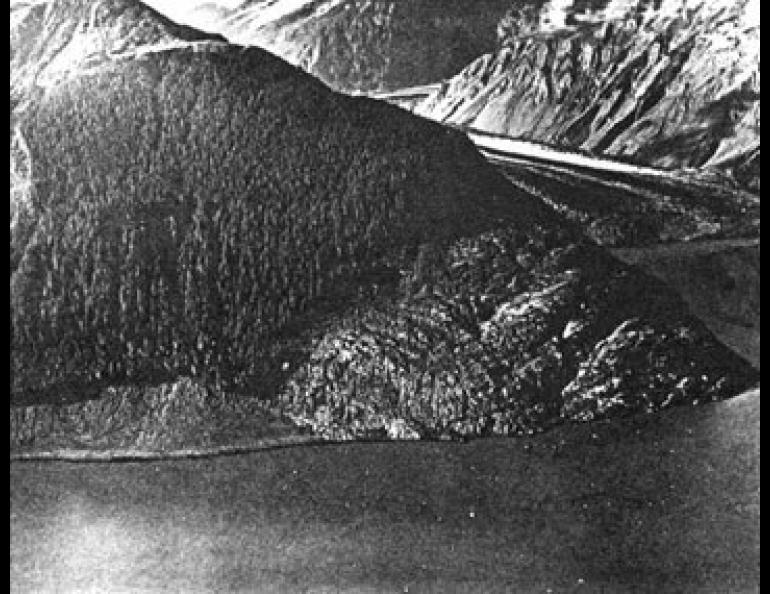
The Big Splash
Residents of Kodiak and other Alaskan cities with steep-sided mountains nearby have from time to time expressed concern about the potential for damage from landslides. One of the dangers is the creation of splash waves when landslides fall into the sea.
Among other records, Alaska holds the one for the biggest splash wave ever observed. It occurred on July 10, 1958, during a major earthquake in southeast Alaska. Violent ground motion along the Fairweather fault caused a huge landslide in the upper part of Lituya Bay.
Forty million cubic yards of dirt and rocks cascaded down a 3000 foot slope near the head of the bay. The landslide clipped off the front of the Lituya glacier as it fell into the bay. A huge splash wave surged up the opposite slope to the unbelievable height of 1740 feet (535 meters).
The surging water denuded the slop of trees and soils. Even above the 1700-foot level trees were uprooted and thrown uphill by the force of the water.
This is by far the biggest splash wave recorded anywhere in the world. In 1936 a landslide into Leon Lake, Norway, created a splash wave 230 feet high, and at Cape Lopatka on the Kamchatka Peninsula, a tsunami wave 210 feet high broke on the coast in 1737.





